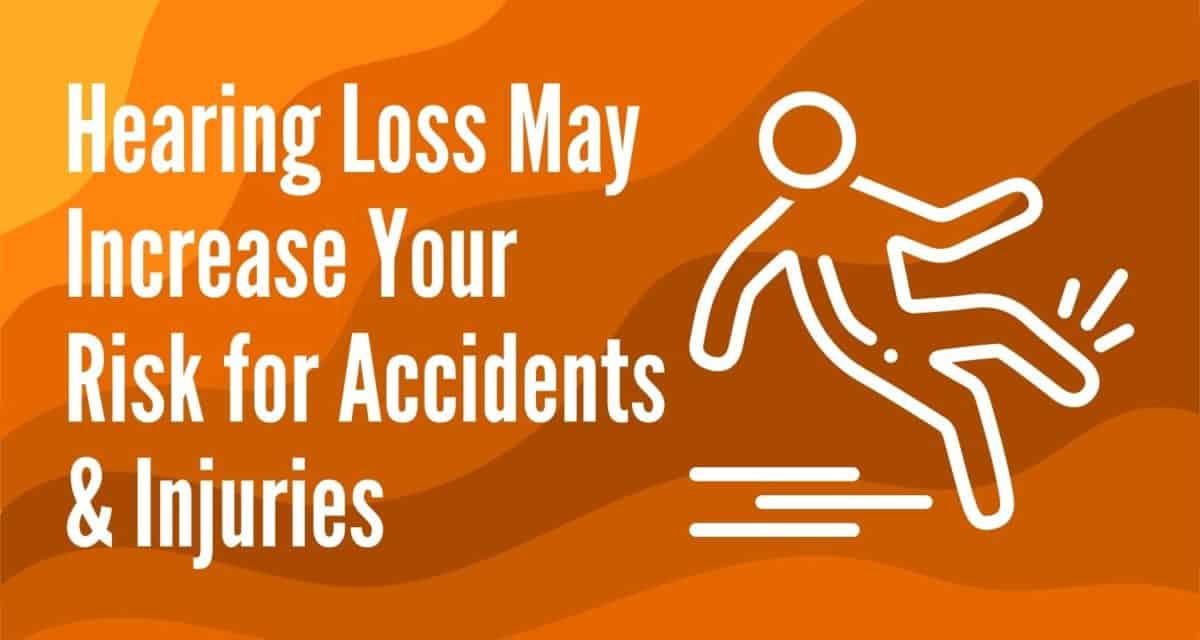Your Phonak hearing aid at unbeatable prices!

Hearing Loss May Increase Your Risk for Accidents & Injuries
Today, over 5% of the world’s population suffers from disabling hearing loss. “Disabling hearing loss” is defined as having 35 dBHL (decibels hearing level) or more of loss in the better ear.
The World Health Organization estimates that an investment of about US$1.40 per capita on the part of wealthier nations could alleviate the complications that result from untreated hearing loss all over the world—and yield nearly 11.5 times that amount in return—over only ten years.
This is possible because untreated hearing loss tends to bring with it a host of complications and lost productivity. While we may once have thought of hearing loss as an annoying but relatively benign disability, studies conducted over the past few decades have shown time and again that untreated hearing loss causes fatigue and dramatically increases the risk of loneliness, depression, earlier onset of cognitive decline, dementia, memory issues, and the list goes on.
We can add to this list an increased risk for accidents and injuries.
A Study on Hearing Loss and Accidental Injury
A 2018 study conducted by researchers at Harvard Medical School and the University of California–Irvine utilized data from an American health survey by the Centers for Disease Control and Prevention. The study was published in the medical journal JAMA Otolaryngology—Head and Neck Surgery.
The study relied on self-reported hearing issues. Of 232.2 million adults surveyed, 15.7% said they had hearing issues. 2.8% of respondents were accidentally injured within three months of taking the survey.
The risk of someone being injured increased corresponding to the amount of hearing loss they claimed to have, with the exception of driving accidents. Those who said they had “a little trouble” hearing had a 60% increased risk of accidental injury. With “moderate trouble” hearing, the risk rose to 70%, and those who reported having “a lot of trouble” were 90% more likely to be injured.
Hearing Loss Brings a Number of Increased Risks
It is not surprising that hearing loss increases our risk of injury. Our ears are one of the main ways we perceive danger in our environment. Threats can often be heard long before they are seen. Most bicyclists, for example, know not to wear headphones while bicycling. By covering up environmental sound with the sound from headphones, the dangers on the road are much harder to perceive far enough in advance to avoid them.
Most of us are well aware of the social difficulties that hearing loss presents. We have regular experiences with the misunderstandings, fatigue, and awkwardness that comes from trying to converse when untreated hearing loss is a factor. We may be less aware of the ways in which this social difficulty can—slowly, over time—give way to social isolation, depression, and cognitive decline.
The fact that untreated hearing loss presents such a significant increase to the risk of physical injury should be a further indicator of just how important it is to treat hearing loss with hearing aids.
Hearing Aids Do More Than Minimize Risk
While the role that hearing aids play in helping to minimize the risks to life and limb that hearing loss presents, the fact is that they also actively improve our experience of life. When asked after one year of wearing them, those who get hearing aids today report satisfaction at a rate of 95%. Wearers have credited their hearing aids with everything from an increased sense of optimism to saving their marriages.
Those who get hearing aids tend to feel more optimistic not only about their own lives—but about the state of the world in general. With the increased hearing ability that hearing aids offer, people tend to get much more physical activity, and to feel more comfortable and at ease both at home and while out of the house. Wearers report higher self-confidence, and a greater sense of independence than those with untreated hearing loss.
Today’s hearing aids are truly marvels of technology. They have the ability to amplify speech while suppressing background noise. They can automatically modify their program as you move between different environments, giving you the best hearing experience wherever you find yourself with minimal input. They connect wirelessly to smartphones and other devices to stream phone calls and media content, just like a set of earbuds but with the perfect amount of amplification for your personal hearing needs.
